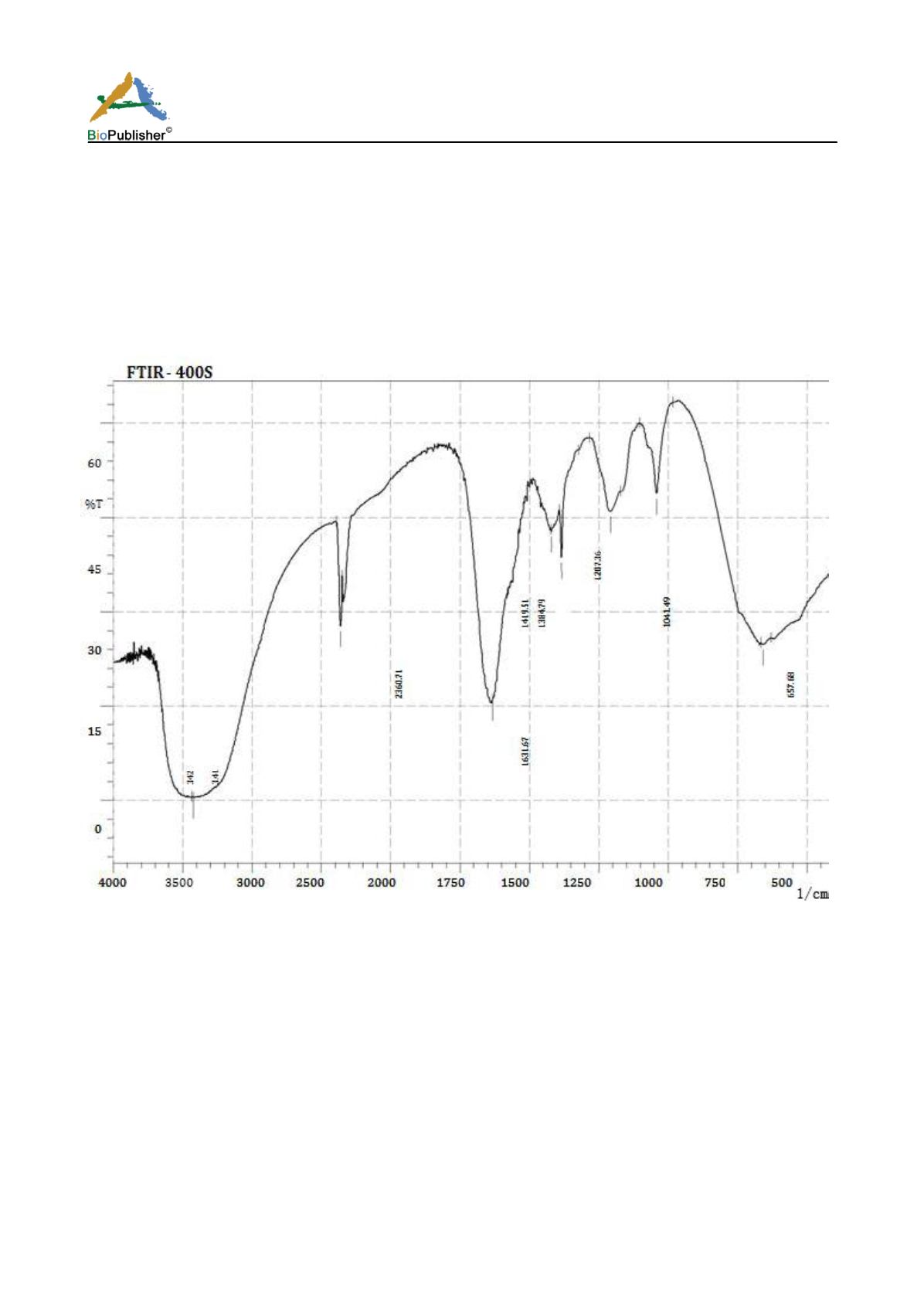
International Journal of Marine Science, 2016, Vol.6, No.20, 1-6
4
DISCUSSION
Natural products play a valuable role discovery. Therefore, the search for novel algal natural compounds should
open promising areas of pharmaceutical study. Many reports of biologically active compounds extracted from
algae have been published, and confirm their ability to produce metabolites with highly complex and remarkably
diverse pharmacological and biological properties. The seaweeds known as medicinal are rich in secondary
metabolites which include alkaloids, glycosides, flavonoids, saponins, tannins, steroids, related active metabolites
are of great medicinal value and have been extensively used in the drug and pharmaceutical industries. The algae
Ulva fasciata, Caulerpa scalpelliformis, Halimeda macroloba, Enteromorpha compressa, Caulerpa corynephora
and
Ulva lactuca
revealed the presence of a good number of secondary metabolites (De Almeida et al., 2011).
Figure 2 FTIR analysis of marine Red alga
Hypnea musciformis
In the present study the red algae contains secondary metabolites like alkenes, sterols, terpenes etc. Marine algae
have been traditionally used as food and medicine. It is because they contain the essential amino acids and
polyunsaturated fatty acids, necessary vitamins and minerals, and larger amounts of dietary fibers. Other reports
indicated that marine algal polysaccharides and proteinaceous substances have valuable functions in immune
modulation and as well as in lowering blood pressure, cholesterol, and glucose level (Thomas and Kim, 2011).
Seaweeds have afforded to date the highest number of compounds within a single group of marine organisms.
Among the bioactive red algal metabolites, dehydrothyrsiferol a triterpenoid polyether isolated from a Canary
island collection of
Laurencia viridis
, has exhibited promising cytotoxic activity. Therefore, its cytotoxic effect on
human estrogen receptor ER+ and ER- breast cancer cell lines was studied in a preclinical pharmacological
evaluation [17]. Three different fucoidan fractions were isolated and purified from the brown alga,
Sargassum
mcclurei
. The SmF1 and SmF2 fucoidans are sulfated heteropolysaccharides that contain fucose, galactose,


